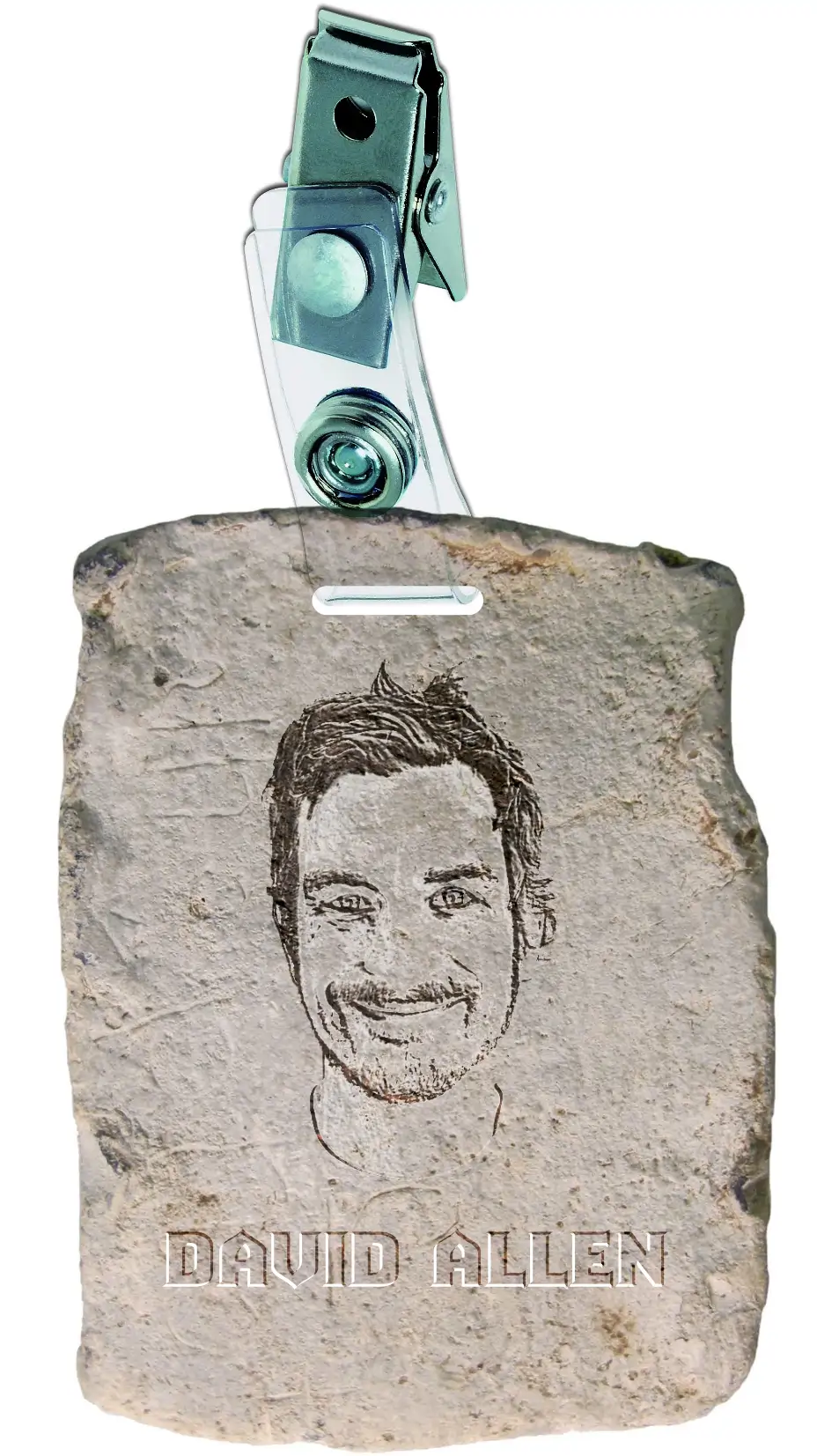 Imagine the scene, thousands of years ago, in a bustling ancient marketplace. Grog, the official stone ID badge carver, is frustrated. His latest commission, an ID badge for Chief Rock, has been a challenging one. Carving Chief’s rather complex beard into the stone without it looking like a mop has proven more difficult than he expected. And don’t even get him started on trying to chisel out the Chief’s distinguishing smirk. One can only hope he didn’t have to do too many retakes!
Imagine the scene, thousands of years ago, in a bustling ancient marketplace. Grog, the official stone ID badge carver, is frustrated. His latest commission, an ID badge for Chief Rock, has been a challenging one. Carving Chief’s rather complex beard into the stone without it looking like a mop has proven more difficult than he expected. And don’t even get him started on trying to chisel out the Chief’s distinguishing smirk. One can only hope he didn’t have to do too many retakes!
Jokes aside, while Grog’s stone-carving endeavors are a fabrication of modern imagination, the need for identification in ancient societies was very real. Surprisingly, our ancestors had their creative ways.
The Ancient World
From the intricate clay seals of ancient Mesopotamia to the engraved signet rings of Rome, identification was crucial. Whether for commerce, status recognition, or security, these tokens often carried significant weight in their societies. Pharaohs and rulers in ancient Egypt, for example, had unique seals to mark their authority on decrees and documents.
Medieval to Industrial Revolution
Fast forward to medieval Europe, where badges were a symbol of guild membership. A goldsmith, for instance, would proudly wear his badge, signifying his allegiance and skillset. By the late 1800s, as photography became more accessible, the first photo IDs began to emerge, paving the way for laminated cards by the 20th century.
Modern Times – The Magnetic Stripe Era
Technology’s advent brought transformative changes to ID badges. By the late 20th century, barcodes and magnetic stripes weren’t just for groceries and credit cards. Offices, hospitals, and schools began using them for identification, security, and even access control. Gone were the days of simple visual verification; the digital era had dawned.
The Digital Age
The turn of the millennium saw an acceleration in technological integration with ID badges. RFID tech ushered in contactless identification. NFC allowed our IDs to communicate with other devices, unlocking new functionalities. And biometrics? Today, your face or fingerprint can be your ID, granting access to buildings or systems without ever pulling out a card.
The Future – Beyond Physical Badges?
While science fiction might have us believe that retinal scans or voice imprints will be the standard in the future, the truth is, we’re not entirely sure where technology will lead the humble ID badge. Augmented reality, perhaps? Or maybe fully digitized holographic IDs? Regardless, one thing seems certain: the need for secure, reliable identification will never wane. And yes, while digital means may increase, there’s still something reassuring about that physical card in your wallet.
Conclusion
From stone seals (not the ones Grog was hypothetically chiseling) to biometric wonders, the journey of ID badges mirrors our evolution in society, technology, and security. As we stand on the cusp of a new era in identification, it’s essential to remember the past and anticipate the future.
Don’t be left in the historical dust. Stay ahead with InstantCard’s cutting-edge ID badge solutions, ensuring you’re always ready for what’s next. From the traditional to the technologically advanced, we’ve got you covered.




